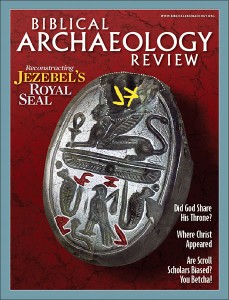Spotlight on Scroll Scholars: Dissecting the Qumran-Essene Hypothesis
Dead Sea Scroll scholars have sometimes ended up badly— as drunkards or in asylums. There is no denying that Dead Sea Scroll research is a stormy and dramatic field, an uncommon mix of great scholarship and crackpot ideas, of collusion and scandal, of passion and intrigue. For six decades, this highly potent mix has proven irresistible to scholars and the public alike.
With their direct bearing on the origins of Christianity, the scrolls discovered near Qumran between 1947 and 1956 were quickly hailed as the most sensational archaeological finding of the 20th century.
The origins of Judeo-Christian civilization— the point of contact between Judaism and Christianity— is itself a fulcrum of intense interest. Ever since their discovery, the scrolls have held the potential of shedding light, in the words of the renowned Jesuit scholar Joseph A. Fitzmyer, “on the very matrix in which Christianity itself was born.”
Within the world of Judaism, too, expectations ran high: The scrolls held the promise of teaching us about the earliest stages of the development of halakhah (the body of Jewish law and ritual) and of comparing the oldest then-known Hebrew texts of the Bible with manuscripts more than a thousand years older.
Already a library member? Log in here.
Institution user? Log in with your IP address.

